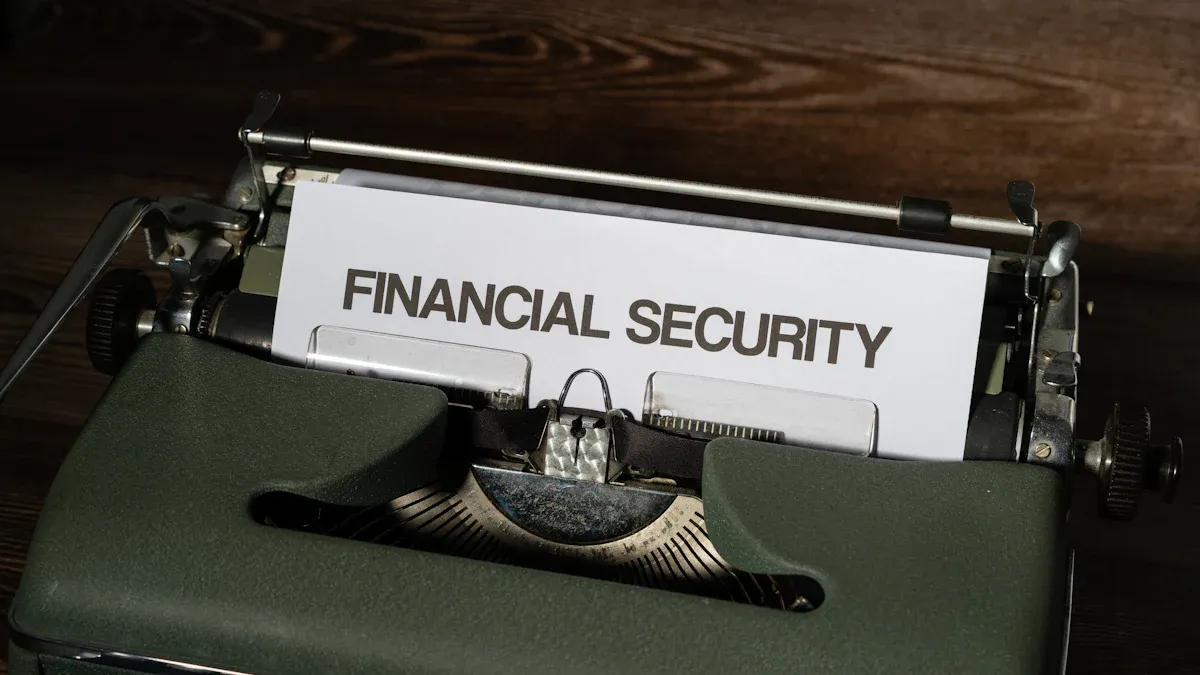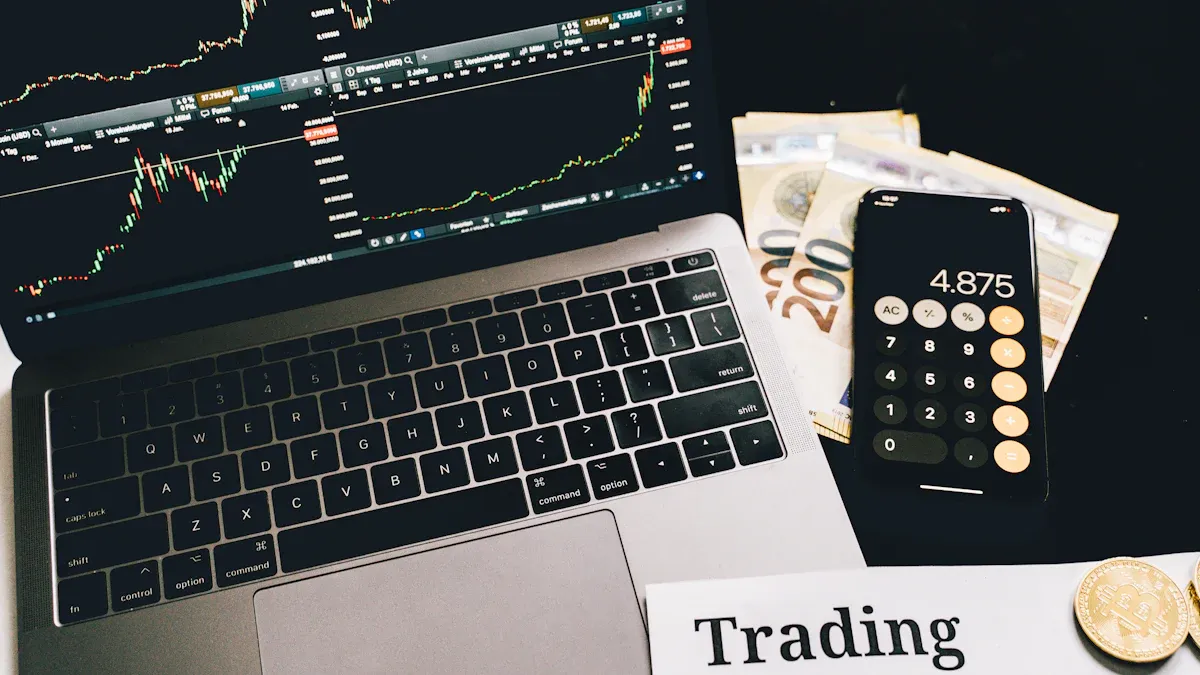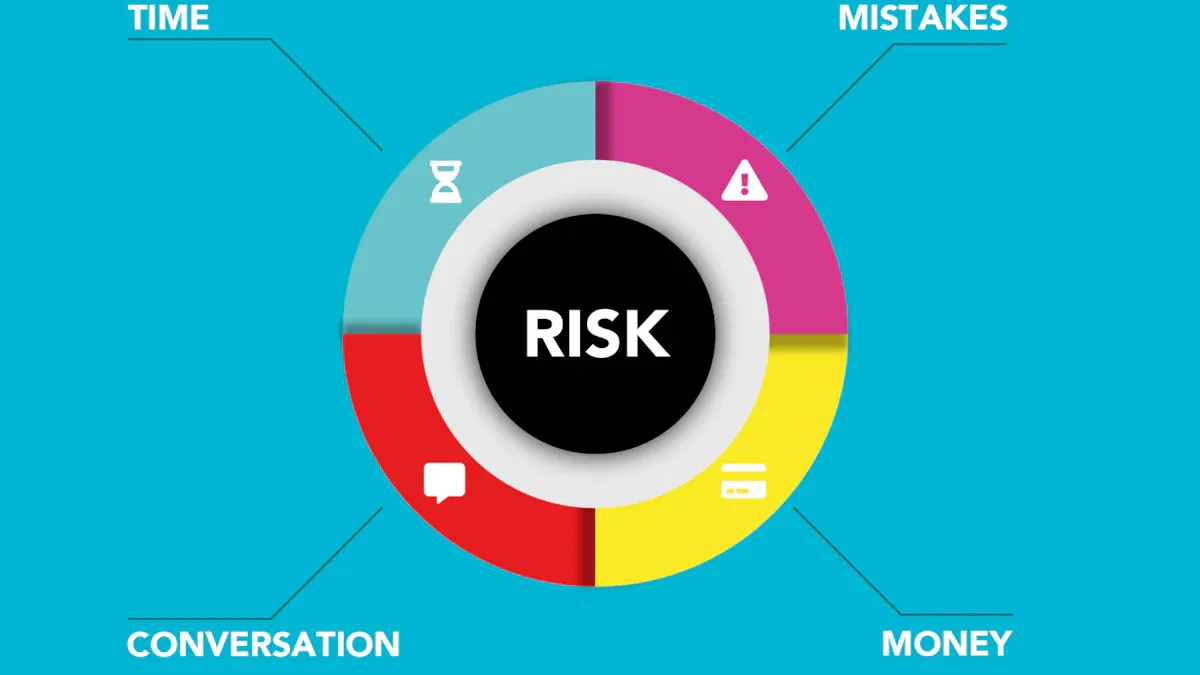- EasyCard
- Trade
- Help
- Announcement
- Academy
- SWIFT Code
- Iban Number
- Referral
- Customer Service
- Blog
- Creator
Simulated trading is not a toy; it is the first shield for novices to avoid losing money

Image Source: pexels
When you first enter the trading market, you often find that losing money is much easier than making money. Simulated trading is not a toy; it helps you learn and practice in a risk-free environment. Many beginners lose frequently due to failing to adapt to market conditions, setting unrealistic expectations, and poor risk management. Through simulated trading, you can identify your mistakes, gradually build trading discipline and plans, and effectively reduce the loss of real funds.
Have you ever regretted impulsive trading or trading without a clear plan? Simulated trading provides you with a safe space to constantly refine your strategy in a real market environment.
- In simulated trading you can:
- Discover and correct mistakes
- Learn how to manage risk
- Cultivate a steady trading mindset
Key Points
- Simulated trading is a safe environment for beginners to learn trading, helping you practice and correct mistakes without risk.
- Through simulated trading, you can build discipline, learn risk management, and develop a stable mindset.
- Simulated trading is not a game. Taking it seriously can improve your trading ability and avoid losses caused by impulsive decisions.
- Setting clear learning goals and keeping a trading journal can help you continuously improve and optimize strategies.
- Smoothly transitioning to live trading and gradually adapting to market pressure can improve your trading success rate.
Simulated Trading Is Not a Toy

Image Source: pexels
What It Really Is
You need to understand that simulated trading is not a toy. Its core purpose is to help you learn and practice trading in a risk-free environment. Professional traders and educators believe the essence of simulated trading lies in education and practice. By operating with virtual funds, you can understand how markets work, study technical indicators, analyze stocks, and make decisions. This way, before putting real money on the line, you can transform theoretical knowledge into practical skills.
- The main functions of simulated trading include:
- Learning stock trading basics in a safe environment
- Practicing with virtual funds to become familiar with market rules
- Studying technical indicators and strategies
- Moving from theory to practice to accumulate experience
Common Misconceptions
Many beginners misunderstand simulated trading. You may think that if you can make money in a simulator, you can easily profit in live markets. In fact, real markets are far more complex than simulated environments. The table below summarizes common misconceptions:
| Misconception Type | Explanation |
|---|---|
| Day trading is a reliable way to make money | Most day traders actually lose money. |
| Success is common | Only 1%-3% of day traders can consistently outperform the market. |
| Skills improve over time | Data shows the most active traders often lose the most. |
You need to beware of these misconceptions and view the role of simulated trading rationally.
Why It Cannot Be Treated as a Game
If you treat simulated trading as a game, you risk ignoring discipline and risk management. You may trade too frequently due to social comparison, taking on higher risks. Studies show that social comparison makes you imitate others’ behavior, even increasing risk-taking without returns. When you see yourself performing worse than others, you may also feel frustrated and less satisfied. Simulated trading is not a toy—you must treat it seriously to truly improve your trading ability.
Reasons Beginners Lose Money
Lack of Experience
When you first get into trading, you lack experience. You may not know how to choose the right instruments or understand basic market rules. In the U.S. market, many beginners put real money in without sufficient preparation and end up losing easily. You need to use simulated trading—not as a toy—to accumulate real practice experience and reduce mistakes.
Experience takes time to build. You can repeatedly practice in a simulated environment, discover your weaknesses, and gradually improve your skills.
Unstable Mindset
Your mindset matters greatly in trading. You may panic due to short-term fluctuations or become overconfident after quick gains. Data from the U.S. market shows many beginners make impulsive trades when facing losses, which leads to bigger losses. You need to control emotions and stay calm. Simulated trading is not a toy; it can help you train your psychology and build stability in a risk-free environment.
- Common signs of unstable mindset:
- Frequently changing strategies
- Blindly following others
- Being desperate to recover losses
Lack of Market Knowledge
If you don’t understand market structures and mechanisms, you can easily make wrong decisions. The U.S. market offers many types of financial products, each with different risks and returns. You need to learn market knowledge and master basic analysis methods. The table below summarizes common beginner blind spots:
| Blind Spot Type | Explanation |
|---|---|
| Market rules | Unclear about trading hours, fees, etc. |
| Product features | Don’t understand risk structures of products |
| Technical analysis | Don’t know how to use indicators for decisions |
You can use simulated trading environments to systematically learn this knowledge and avoid losing money due to lack of information.
The Shield Role of Simulated Trading

Image Source: pexels
Error Correction
When you first start trading, you easily make mistakes. Simulated trading is not a toy; it provides a risk-free environment for you to boldly try different strategies. You can discover errors such as bad timing, unreasonable stop-loss settings, or poor position management. Each mistake costs no real money, and you can keep adjusting until you find better methods.
Practicing in simulated trading helps you identify and fix mistakes in time. By the time you enter live markets, you will already have stronger risk control ability.
You can use simulated trading for error correction by:
- Recording each trade decision and analyzing results
- Reviewing failed strategies to find causes
- Making improvement plans for common mistakes
Simulated trading builds a habit of self-reflection, helping you reduce unnecessary losses before live trading.
Discipline and Mindset
In trading, discipline and mindset determine results. Many psychology experts believe simulated trading provides a safe environment to practice strategies without financial pressure. This builds confidence and helps you understand emotional reactions to market volatility—a key to long-term success.
Many traders don’t realize much of trading psychology is learned through practice.
You can build discipline in simulated trading by:
- Creating strict trading plans and executing them
- Setting stop-loss and take-profit levels to avoid impulsive actions
- Recording emotional changes and analyzing their effect on decisions
Repeated practice in simulation gradually builds a stable mindset. You’ll find it easier to stay calm during volatility—not panicking when losing, not becoming blindly confident when winning. Simulated trading is not a toy; it’s the best tool to strengthen psychology and discipline.
Getting Familiar with the Market
When you first enter trading, facing complex tools and market moves can feel confusing. Simulated trading platforms help you get familiar with user interfaces for real trading. You can test strategies and better understand how markets work. Simulation also allows practice in risk management tools like stop-loss and limit orders, which are crucial skills.
You can in simulation:
- Learn how to use trading tools
- Observe market trends and analyze price movements
- Practice order placement and cancellations
This practice lets you adapt faster when trading live. The deeper your understanding, the better your decisions.
Differences Between Simulated and Live Trading
Risk and Pressure
In simulation, you don’t face real financial loss. It’s a safe space to test strategies. In live U.S. markets, each decision carries real profit and loss pressure. Simulation removes this burden, allowing you to focus on learning. You can build confidence without risk.
Mistakes in simulation don’t cost USD, letting you focus on strategy instead of account balance.
Skill Transfer
Skills learned in simulation help you adapt faster in live trading. You can master order types like limit and stop-loss, learn platform processes, and practice execution.
The table below shows key transfer points:
| Skill Type | Role in Simulation | Application in Live Trading |
|---|---|---|
| Order process | Get familiar | Execute trades quickly |
| Risk management | Test stop-loss | Control actual losses |
| Strategy optimization | Try methods | Choose best strategies |
Simulation lays a strong foundation for live trading.
Unique Value
Simulation has unique benefits live trading cannot replace. You can learn and practice without losing money, test many strategies, and prepare for live execution.
- Unique benefits include:
- Risk-free testing to build confidence
- Using real-time data to experience real volatility
- Repeated practice to gain experience
These benefits make simulation invaluable. Use it fully to prepare for your trading journey.
Efficient Use of Simulated Trading
Goal Setting
Before starting, set clear goals. Goals keep you motivated and avoid random actions. Short-term goals might be learning the platform, while long-term goals may be mastering a stable strategy.
With goals, you focus on skills, not just profits.
You can:
- Plan weekly tasks like testing strategies or reviewing trades
- Create discipline goals like always planning before trades
- Work on psychology goals like staying calm in volatility
Goal setting improves resilience and discipline. Rewards can motivate you.
Logging and Review
Keep records and review. Trading journals are key to learning. Log trade reasons, execution, results, and emotions. This reveals patterns and errors.
Key points:
- Record entry/exit, price, size, profit/loss
- Note emotions and decision logic
- Regularly review to optimize strategies
Example metrics:
| Metric Name | Explanation |
|---|---|
| Avg trade P&L | Reflects strategy effectiveness |
| Profit factor | Profit-to-loss ratio, measures risk mgmt |
| Long vs short P&L | Adjust based on performance differences |
| Drawdown | Tracks max loss for risk control |
| Win rate | % of winning trades, monitors effectiveness |
Systematic journaling turns chaos into structured learning. Tracking emotions improves self-awareness. You can join communities for feedback and mentorship.
Smooth Transition
After progress in simulation, transition carefully to live trading. Jumping in unprepared leads to losses. Follow best practices in stages.
Steps:
- Psychological preparation: Treat simulation as real, set clear rules, practice mindfulness.
- Gradual transition: Start small, risk <1% per trade, use stop-loss.
- Ongoing learning: Keep learning in live markets, use resources and communities.
Keep logging trades in live markets and seek feedback. This builds discipline and helps adapt to pressure.
Smooth transition reduces risk and keeps you motivated. With structure, you’ll succeed more often.
Your simulation habits become the foundation for live trading. With goal setting, journaling, and structured transition, you can steadily improve.
Simulation protects beginners’ funds. Take it seriously—it’s the path to improved skills and fewer losses.
- Risk-free environment to explore markets
- Practice repeatedly to build confidence
- Test and refine strategies
- Optimize timing and indicators, create a plan for live trading
FAQ
What is the difference between simulation and live trading?
In simulation you don’t lose real USD. Live trading involves real money and pressure. Simulation lets you focus on learning.
How long should I simulate before going live?
It depends on your progress. At least one month of consistent practice is recommended before going live.
Can simulation improve my trading psychology?
Yes. You can practice emotion control, stay calm in volatility, and build confidence and discipline.
Do simulation results represent live performance?
No. They are references. Live trading has real pressure and risks.
Can I test all strategies in simulation?
Yes. It’s a safe environment to discover what works best and refine strategies.
Simulated trading serves as a critical shield for beginners, allowing you to hone skills in a risk-free environment and build a strong foundation for live trading. However, challenges like high cross-border remittance fees, exchange rate volatility, and platform complexities can increase costs or reduce efficiency in real trading.
BiyaPay offers a seamless financial platform to overcome these obstacles. Our real-time exchange rate queries provide instant access to fiat and digital currency conversion rates across various currencies, ensuring transparency and efficiency. With remittance fees as low as 0.5%, covering most countries globally and enabling same-day transfers, BiyaPay supports your live trading with swift fund access. Plus, you can trade US and Hong Kong stocks via our stocks feature without needing an overseas account, leveraging simulated trading experience to refine your strategies. Sign up with BiyaPay today to enhance your trading efficiency, transition smoothly from simulation to live markets, and achieve confident, successful trading!
*This article is provided for general information purposes and does not constitute legal, tax or other professional advice from BiyaPay or its subsidiaries and its affiliates, and it is not intended as a substitute for obtaining advice from a financial advisor or any other professional.
We make no representations, warranties or warranties, express or implied, as to the accuracy, completeness or timeliness of the contents of this publication.




Contact Us
Company and Team
BiyaPay Products
Customer Services
is a broker-dealer registered with the U.S. Securities and Exchange Commission (SEC) (No.: 802-127417), member of the Financial Industry Regulatory Authority (FINRA) (CRD: 325027), member of the Securities Investor Protection Corporation (SIPC), and regulated by FINRA and SEC.
registered with the US Financial Crimes Enforcement Network (FinCEN), as a Money Services Business (MSB), registration number: 31000218637349, and regulated by FinCEN.
registered as Financial Service Provider (FSP number: FSP1007221) in New Zealand, and is a member of the Financial Dispute Resolution Scheme, a New Zealand independent dispute resolution service provider.



















